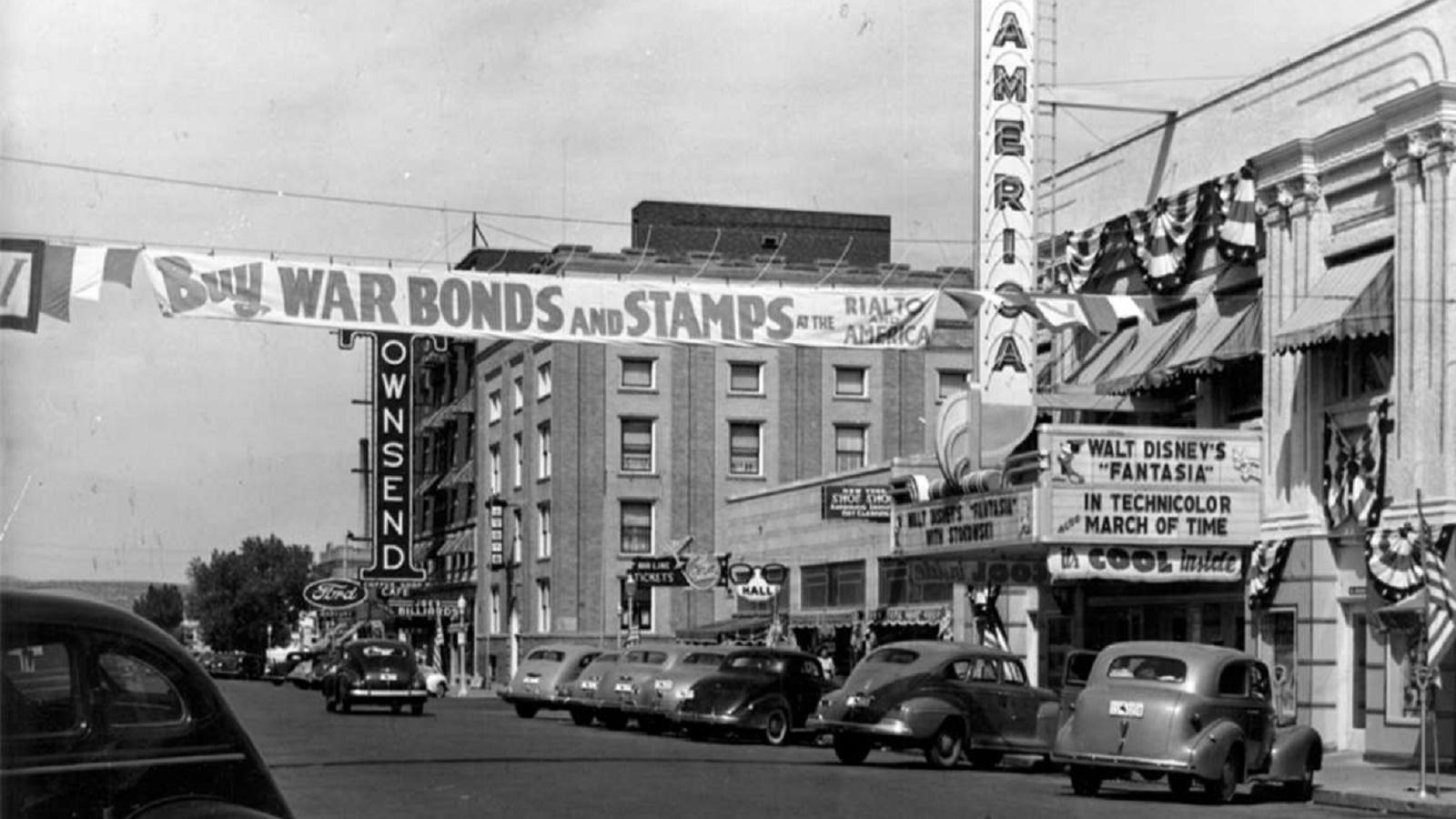Last updated: September 21, 2023
Place
Casper & Natrona County, Wyoming

Casper College Western History Center
American World War II Heritage City
Casper Army Air Base (CAAB) is one of only four World War II installations constructed in Wyoming. The 211th Army Air Force Base Unit, B-17 and B-24 bomber groups, trained for overseas assignment in Europe and the Pacific--an estimated 16,000 combat crew members. The facility, including its outlying gunnery and bomb ranges, was the largest military installation in Wyoming's history. Between 16,000 and 18,000 personnel were trained in Casper from 1942 to 1945.
Casper Army Air Base was a small city comparable in size to many Wyoming communities at the time. Over four hundred buildings were built, and more than 1,500 Casper residents participated in developing utility lines, roads, and runways in Spring 1942. The base grew to almost a third of the Casper population, which was almost 15,000 people. The base had a population of 5,000 military and civilian personnel that included about 1,400 trainees and 1,000 civilian employees. Most of the civilian employees worked in aviation maintenance at the 348th Sub-Depot. The remaining civilian jobs included firefighter, secretary, and sales clerk.
The 377th Aviation Squadron was a racially segregated African American unit. Organized on March 21st, 1943, the 377th provided labor, maintenance services, and staffed the Officer's Club and Bachelor Officer's Quarters. Later, a small number worked as a refueling unit and as military police. The 377th had white officers and was housed in a separate area away from the white base population. The squadron's maximum allowed strength was 399 enlisted and two officers but typically averaged 350.
Civilian establishments in Casper excluded Black squadron members from services. The 377th officers provided recreational alternatives including hosting monthly visits from an African American chaplain stationed at Fort F.E. Warren in Cheyenne and organizing special morale trips to Denver, Colorado. A volunteer jazz swing band performed at segregated base functions and other events.
CAAB hosted the 768th Women’s Army Corps Provision Headquarters Company, an all-female unit, of no more than 156 members. The 768th were Women’s Army Auxiliary Corps, later the Women’s Army Corps (WACs). The WACs served in support roles, including aircraft maintenance, flight control, operations, supply, bombsight maintenance, the SlipStream newspaper office, weather office, personnel, and WAC mess hall.The 348th Sub-Depot provided critical aviation maintenance and repair facility at CAAB but reported to authorities at the Ogden Air Depot in Utah. The sub-depot employed trained civilian workers to repair and modify aircraft. In 1943, the facility employed about 400, primarily female, civilians.
After its March 7,1945 closing, the Wyoming Air National Guard used the base. It is now the Natrona County International Airport, which houses the Wyoming Veterans Memorial Museum in the historic Enlisted Men’s Service Club building. The Enlisted Men's Service Club was an essential recreational building for enlisted white personnel and non-commissioned officers. Four service members stationed at the airbase between October 1943 and June 1944A created set of 15 historic murals, the building's hallmark. The murals illustrate scenes from Wyoming history and Native American imagery. They are the only remaining example of murals from the CAAB period.
The Wyoming Veterans Memorial Museum opened its doors in 1998 as a non-profit museum and the American Wars Commemorative Association was created to operate it. The museum interprets stories of Wyoming WWII Veterans and the CAAB operations. Almost one hundred original CAAB buildings, along with the original street layout, parade grounds, and concrete pads for many of the former buildings, remain. The CAAB historic district was listed in the National Register on August 3, 2001.
